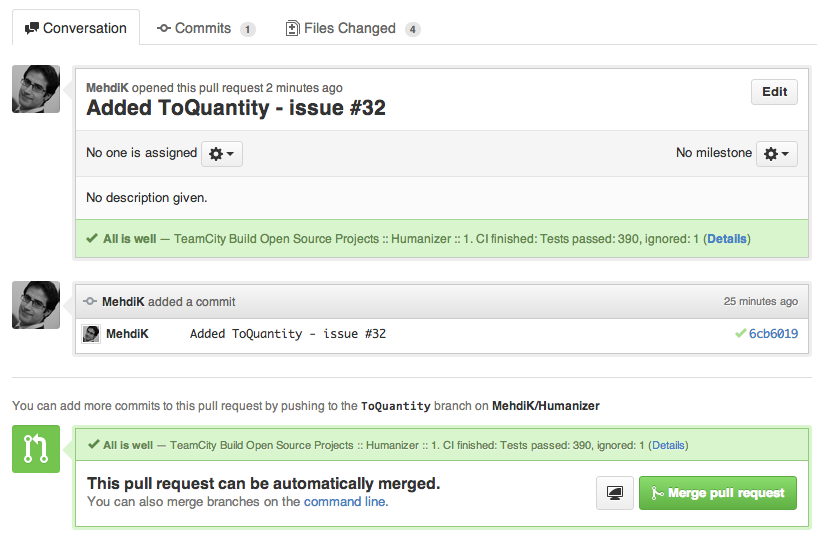


Any other database type that can be containerized can also be used.
TEAMCITY GITHUB CODE

TEAMCITY GITHUB INSTALL
> rvm install ruby-#.gitĬlient checkouts have a full git repository while a server side checkout performs a git pull and then copies the resulting files but not the full git work-tree to the build agents leaving the agents unable to easily run git commands. Upload the public key to github as a deploy key for the project so that the build agent can pull from the github repository.Ģ. Perhaps one day we’ll see each project include chef recipes to configure it’s own build environment and I would be interested to hear from anyone who has automated their CI configuration to that extent. The configuration below is therefore usually only applied once but in an environment using remote build agents it would need to be repeated or shared between every compatible remote agent’s system. As a result I have favored running as many build agents as possible as local build agents so that they share this configuration. For example we have projects which need access to a database servers or need private keys to use when deploying. Here’s the configuration I have used to get our build agents to use each project’s RVM settings.Īs much as I would like to see each project able to configure all of it’s dependencies on its environment we still have some dependencies which are not captured in the project configuration. RVM proved to be particularly useful on our TeamCity build agents where it allows a single agent to build many projects without the fear that we will see gem or ruby version conflicts between projects or introduce dependencies on gems installed on the build server but not enumerated in the project. We have also been using RVM on all of our recent Rails projects to allow us to install multiple ruby versions and create isolated gemsets for each project. We have been using TeamCity to manage the continuous integration, testing, and deployment of many of our recent projects.


 0 kommentar(er)
0 kommentar(er)
